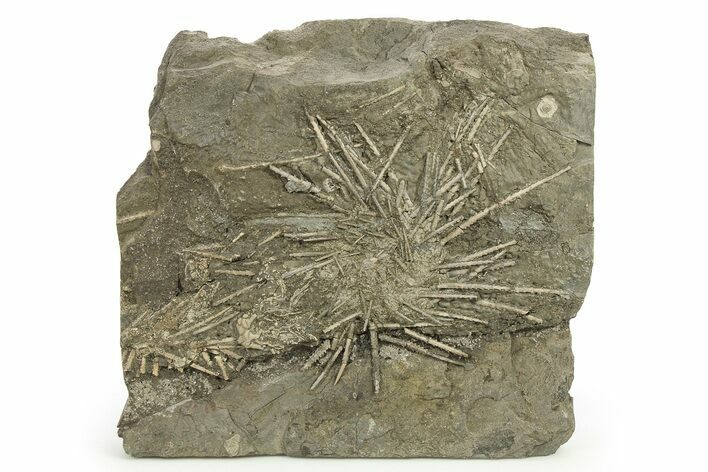This Specimen has been sold.
7.7" Pennsylvanian Fossil Urchin and Crinoid Plate - Texas
This is an impressive Carboniferous (Pennsylvanian) fossil urchin (Archaeocidaris brownwoodensis) and partial crinoid plate from the Winchell Formation near Brownwood, Texas. Most of the spines have been exposed from the rock and the calyx of the crinoid can be seen about two inches from one edge. The spines are natural and have not been composited.
It comes with an acrylic display stand.
There is a repaired crack through the rock. The crack runs through one side of the urchin, requiring some repair and remounting of some of the spines. The genus provided for the crinoid was Graffamcrinus, however we could find no evidence that this genus was accurate.
It comes with an acrylic display stand.
There is a repaired crack through the rock. The crack runs through one side of the urchin, requiring some repair and remounting of some of the spines. The genus provided for the crinoid was Graffamcrinus, however we could find no evidence that this genus was accurate.
Crinoids, sometimes commonly referred to as sea lilies, are animals, not plants. They are echinoderms related to starfish, sea urchins, and brittle stars. Many crinoid traits are like other members of their phylum; such traits include tube feet, radial symmetry, a water vascular system, and appendages in multiples of five (pentameral). They first appeared in the Ordovician (488 million years ago) and some species are still alive today.
SPECIES
Archaeocidaris brownwoodensis (Urchin) & Unidentified Crinoid
AGE
LOCATION
Brownwood, Texas
FORMATION
Winchell Formation
SIZE
Largest Urchin: about 6.9" wide, Sandstone: 7.7 x 7.1"
CATEGORY
SUB CATEGORY
ITEM
#283706
We guarantee the authenticity of all of our specimens.
 Reviews
Reviews















